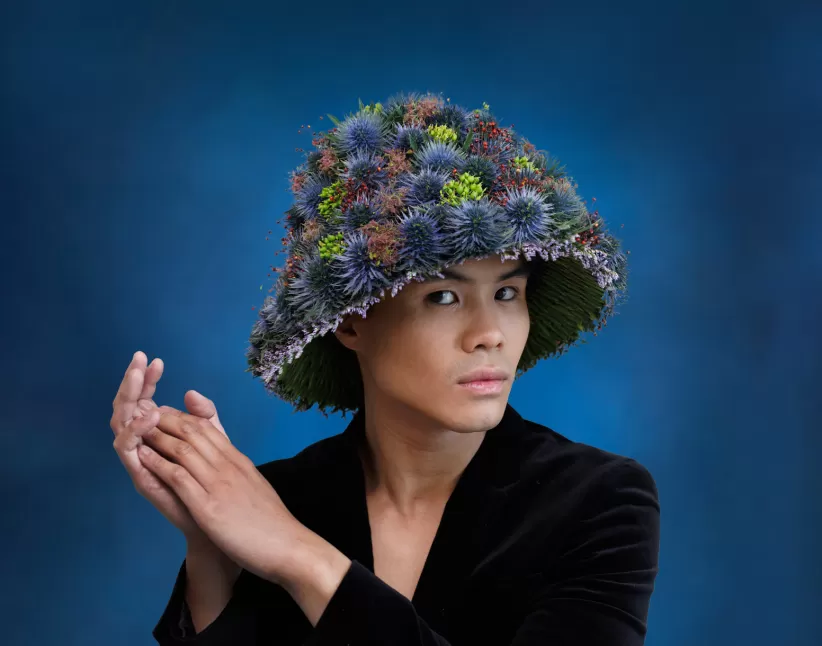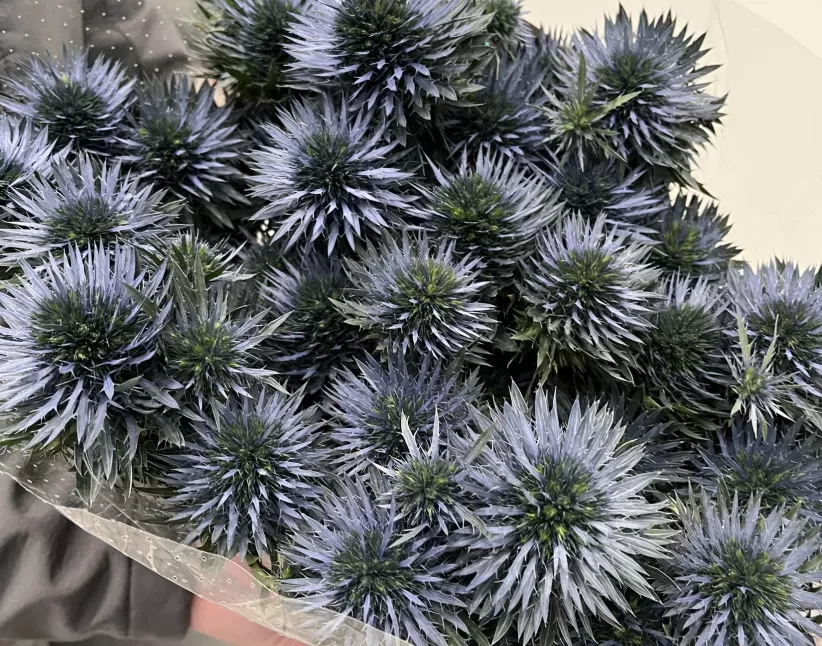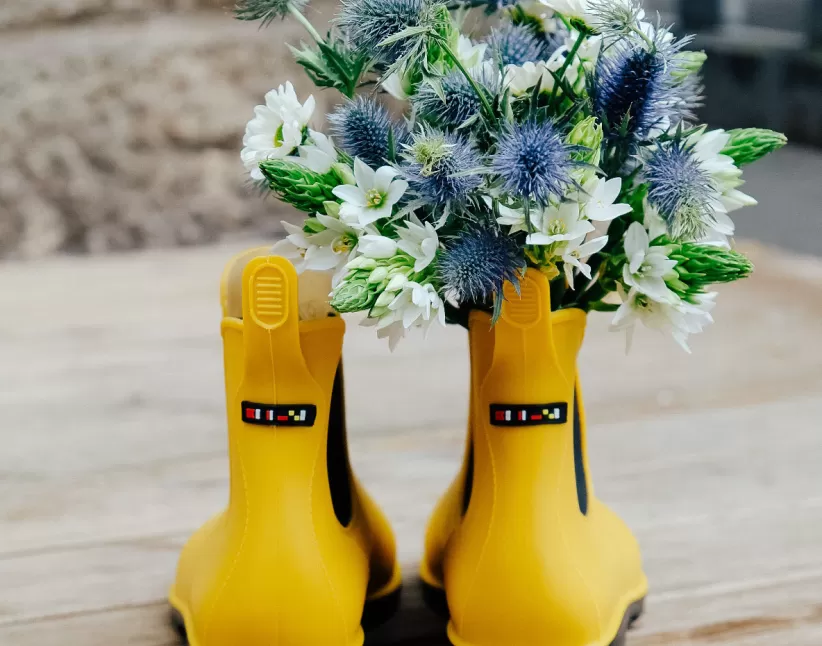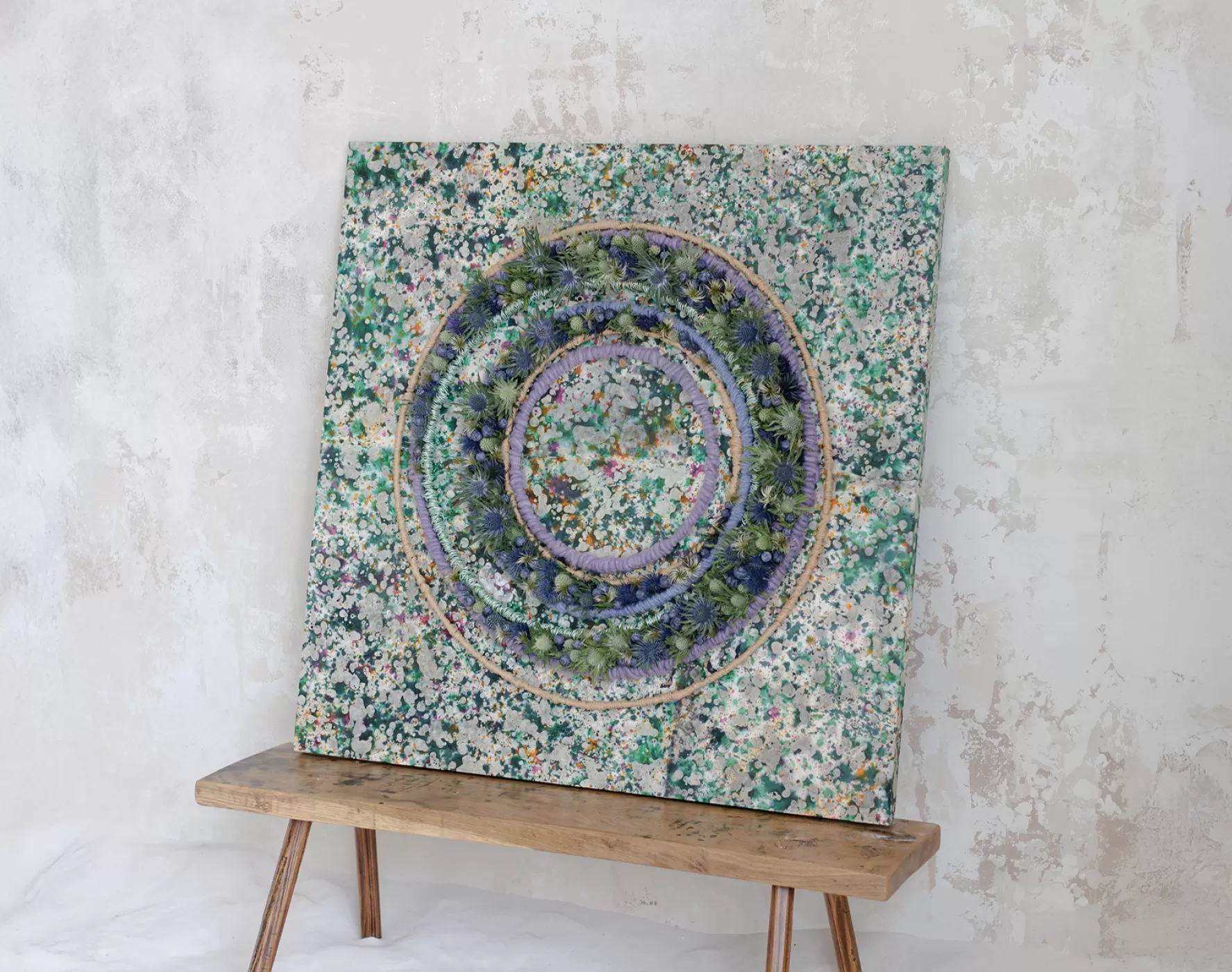
elcome to part 2 of 'Botanical sculpting with Eryngium'. Haven't seen part 1 yet? Krisztián Kövér explains his vision and techniques for the cover shoot of our new "Story of M." magazine.
Let's pick up right were we left off. In this series, Krisztián Kövér explores the relationship between form, rhythm, and layering, always guided by a deep respect for botanical materials.
He got to work with the new Eryngium Scorpius Questar® and even a few varieties that are yet to be brought to market: Eryngium Perseus Questar®, Gemini Questar® and Artemis Questar®. The result? A bespoke collection of floral masterpieces that showcases just how versatile these spiky beauties can be.
Floral relief
The circular composition, at the top of this page, was built on a wooden board base. The background was made from dyed paper, resulting in a unique and energetic backdrop.
Tip: After sketching the circular lines, I layered thick wool cord, paper-covered wires, and coloured wool. Between the floral zones, I used twisted wire, berries and Eryngium heads, creating a structure that feels both sculptural and softened by the arcs.
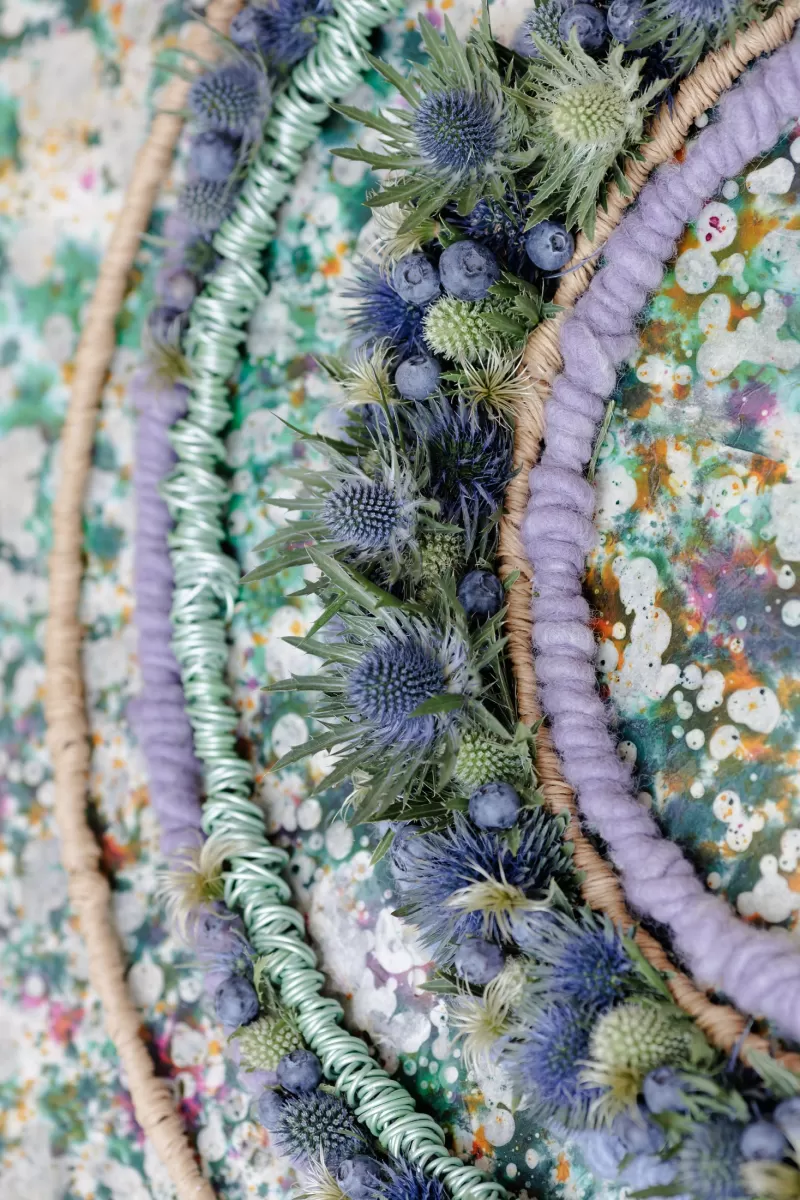
Materials used:
- Eryngium Sirius Questar®, Orion Questar®, Magnetar Questar® and the recently launched Scorpius Questar®
- Clematis Amazing® Kibo
- Blueberries
- Aluminium and paper-covered wire
- Coloured wool cords
Technique:
I worked from the outer ring toward the centre. The flower heads were glued using cold floral adhesive (e.g., Oasis Floral Adhesive).
Repetitive structures – texture & rhythm
Four identical black bowls were filled with Eryngium Supernova Questar® and Euphorbia stems. This type of repetition works perfectly for spatial dividers or as elongated table decorations.
Tip: Add slight variations within identical shapes (e.g., berry placement, direction of tilt) to create a dynamic effect.
Technique: Materials were arranged in water-soaked floral foam (Oasis MaxLife).
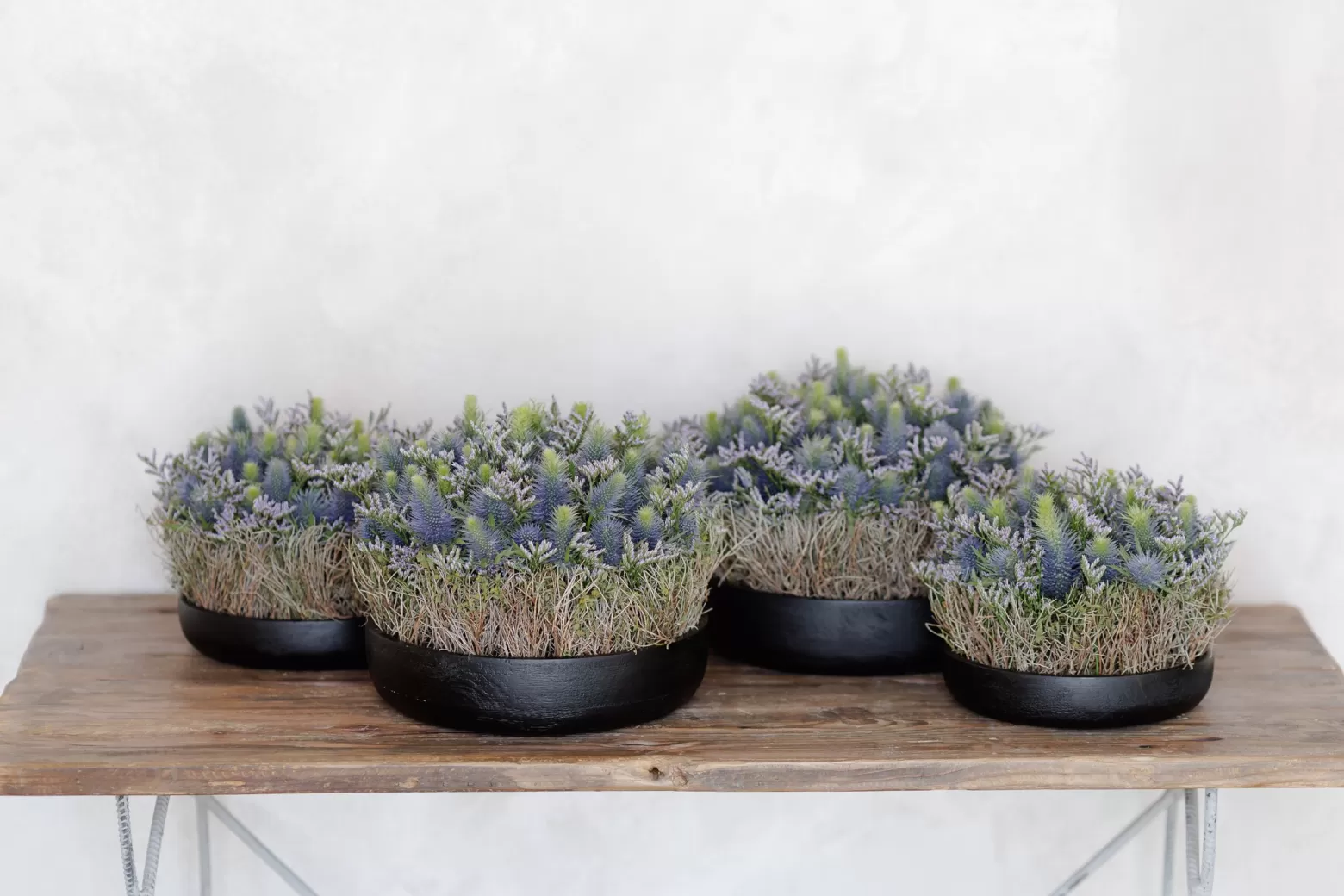
Planters wrapped with paper straw
Natural coverings (raffia, corn leaves, straw) soften the visual edges of the container and shift the focus, the plant material appears as a crown, not the central mass. This design gives a sneak peak of two brand-new white Eryngiums: Eryngium Artemis Questar® and Eryngium Gemini Questar®. These varieties will be launched soon!
Tip: Complete the wrapping before inserting any plant material. I used a wire framework inside, stabilised with floral wire. This structure doesn’t require any floral foam.
Technique: In this case, I used a reusable glass insert, which also helps reduce ecological impact.
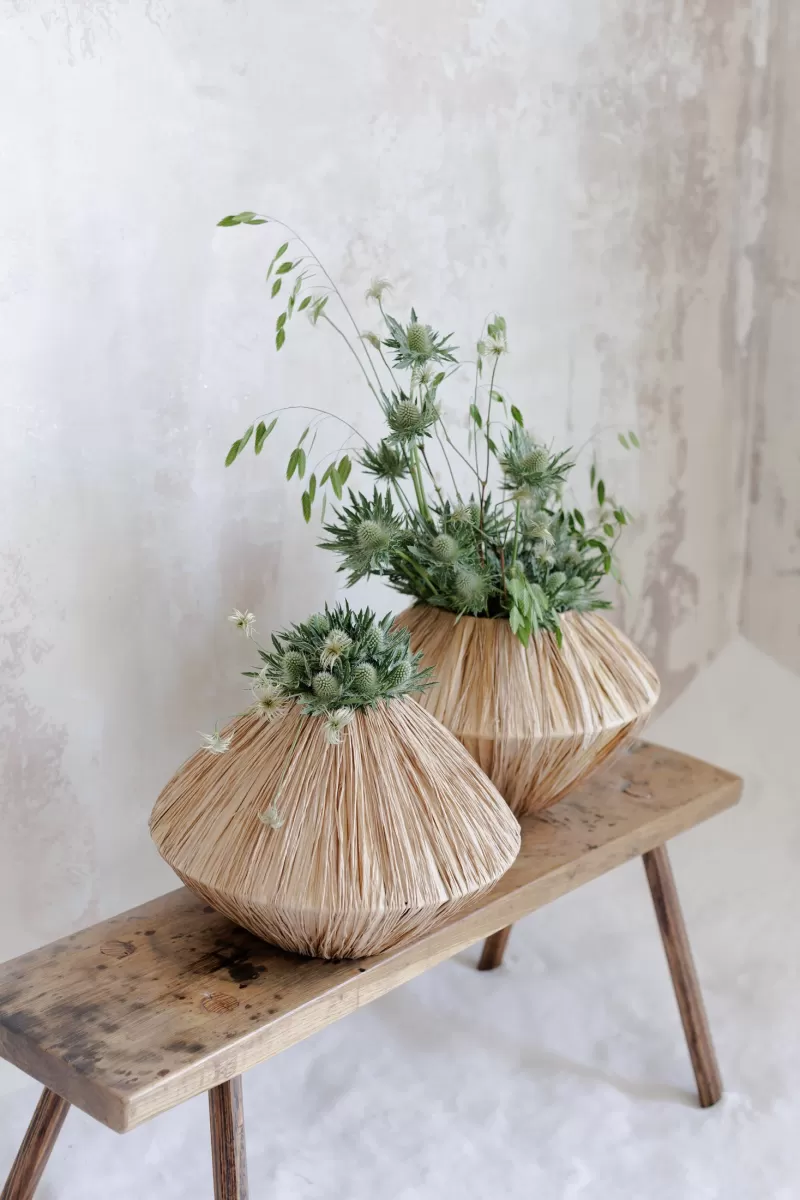
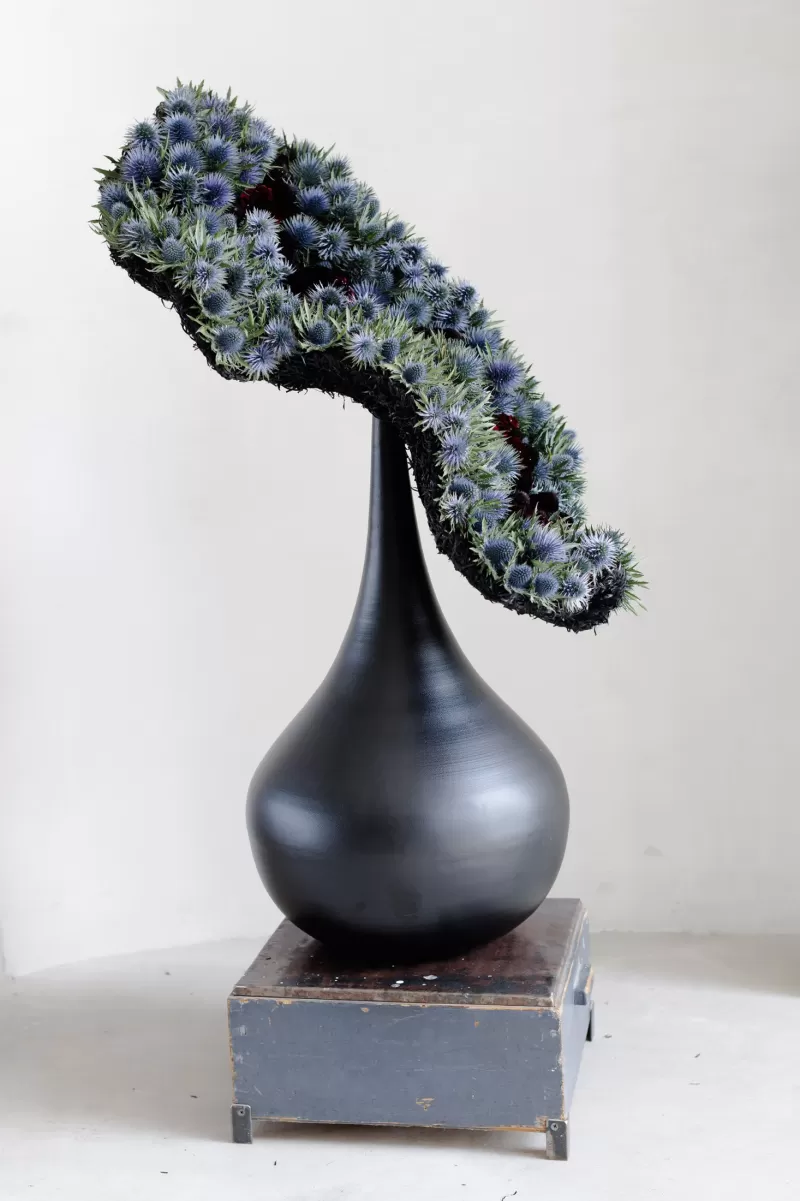
Sculptural dynamics – balance of form
This teardrop-shaped black vase holds an asymmetrical floral structure leaning to one side, creating a floating effect. Eryngium Scorpius Questar®, Magnetar Questar® and Orion Questar® are paired with Scabiosa Bon Bon Scoop™ Maraschino, which is placed in the centre. A combination reminiscent of a rare crystal. The unusual shape was a challenge, but worth the effort.
Tip: You can use pre-formed structures made from sisal or other dried materials fixed to fine mesh, then secured inside the vase. The Eryngium heads were attached using cold glue.
Tension meets lightness
This composition was placed in a grey-turquoise planter, matching the silvery tone of the Eryngiums. I contrasted the compact base with a loose, airy structure of sticks, wires, and raffia, closed with Eryngium and highlighted with Gloriosa Superba Simba Fifty Shades.
Tip: Stabilise dried materials by using structural wires (e.g., HR-The WireMan), which can be bound together as needed.
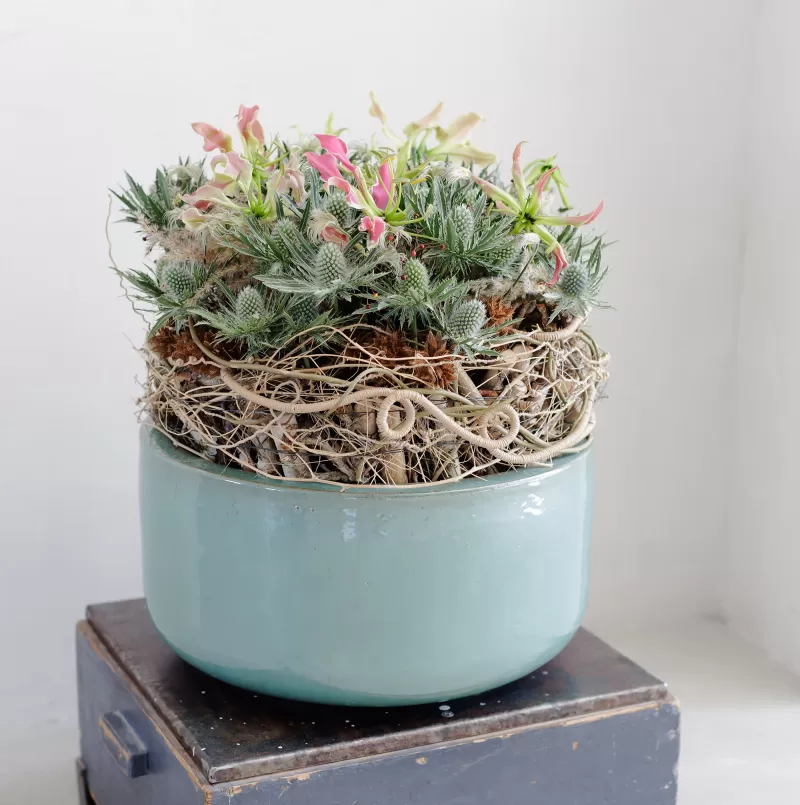
Spiky heart
This heart-shaped arrangement was built from a wire frame, covered with slices of wood, then layered with Eryngium heads glued with cold adhesive. The dimensional shape was created by varying the heights of the flower heads. The white Eryngiums are a mix of Eryngium Sirius Questar®, Artemis Questar® and Gemini Questar®.
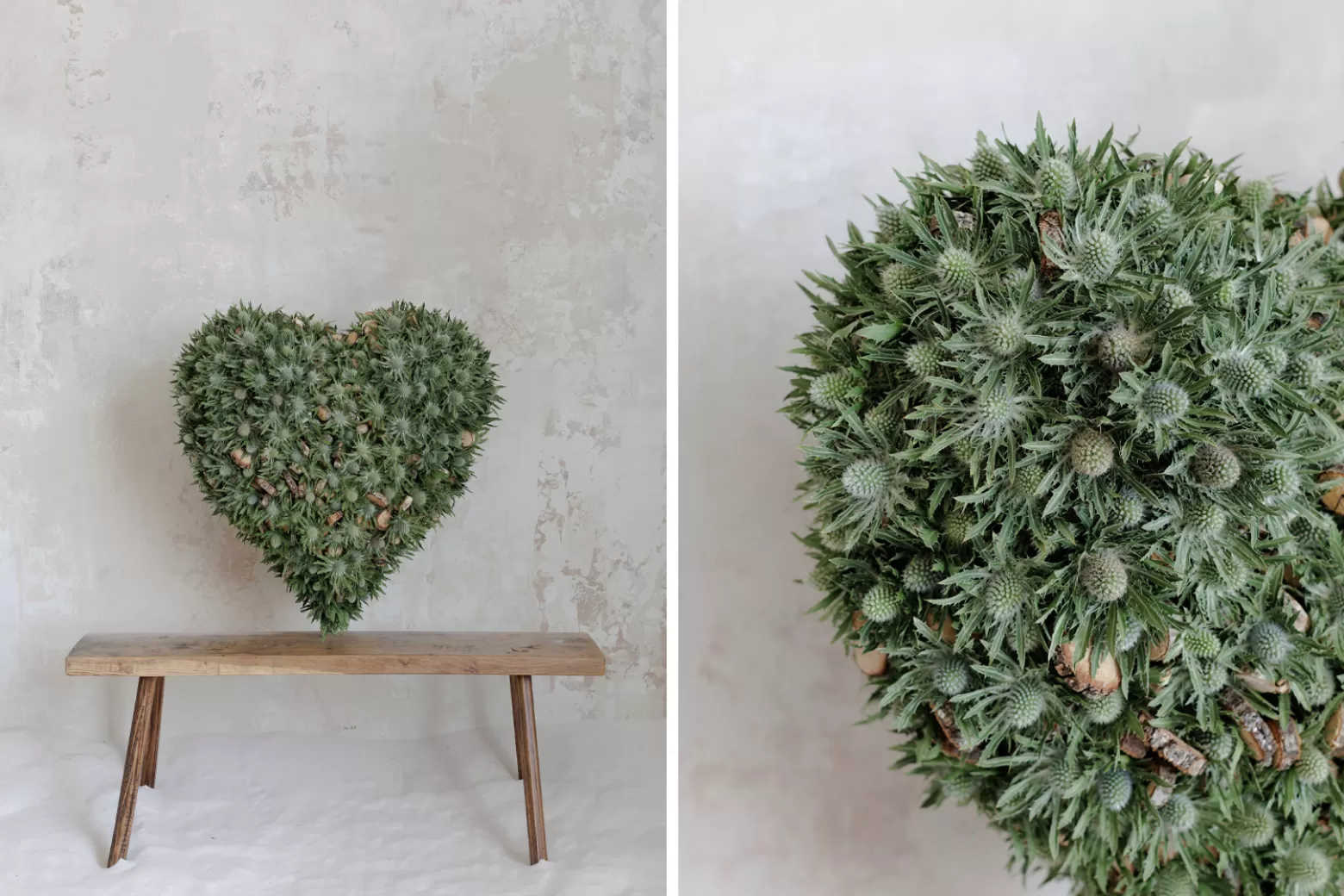
Breeze
This composition features dynamically placed lines of Panicum Heavy Metal grasses which surround the Eryngiums in the centre. The visual effect is both graphic and organic, as if the lines are suspended in the air.
Tip: Use a thin wooden or metal board with pre-drilled holes to hold the stems. Hot glue can help stabilise them. String beads and wooden balls on wire and make sure to use lightweight materials to maintain the visual airiness.
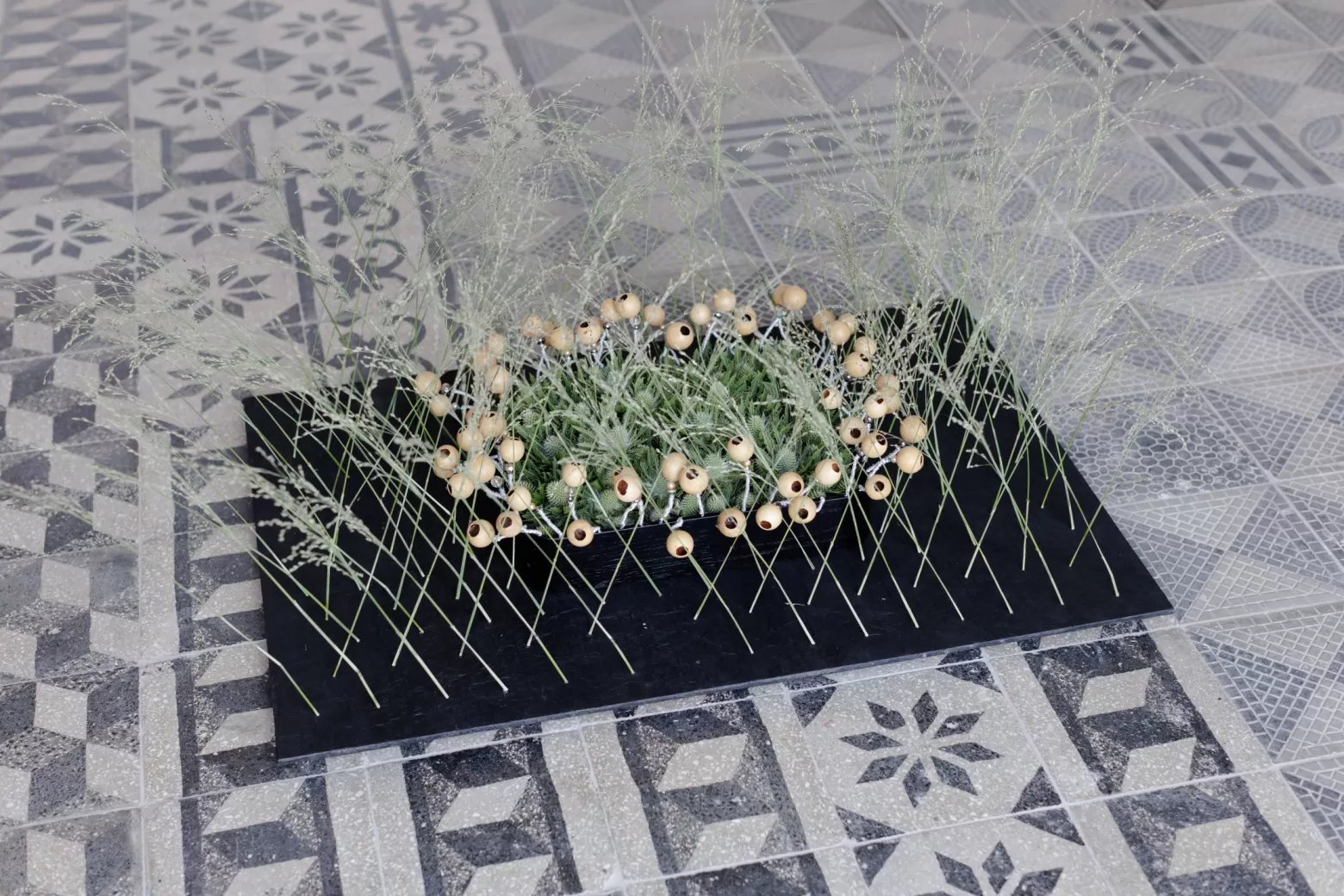
The power of texture
A mirrored lamp base holds a cylinder densely covered with Eryngium heads, like a floral lampshade. The contrast between the smooth, reflective vase and the wild, spiky texture of the flowers creates striking tension. Eryngium Scorpius Questar®, Perseus Questar®, Magnetar Questar® and Orion Questar® were used to create a mixture of colours and textures.
Tip: Use a large cylindrical form (e.g., an upcycled lampshade) and glue the flower heads tightly, overlapping slightly for a uniform surface. In this case, I also added Clematis Amazing® Kibo for variation.
Technique: The flower heads are attached with cold floral adhesive.
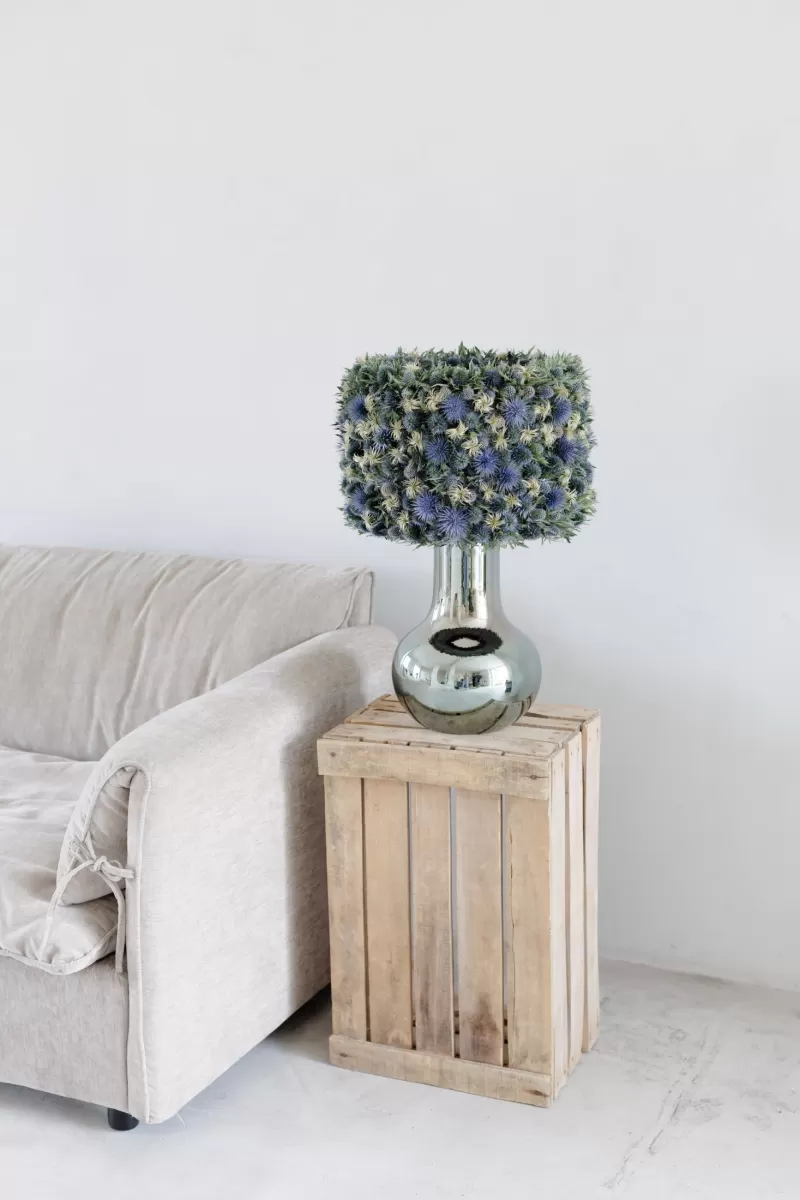
Final thoughts
This series was an experiment: how far can a single dominant flower, in this case Eryngium, be pushed in both visual and technical variation? The answer: quite far. Sometimes limitations open new creative doors. When the material is fixed, artistic freedom can emerge through structure and rhythm.
One last tip by Krisztián Kövér:
"Dare to repeat, simplify, or go bold. Structure is not a limitation, it’s a tool."
Floral design: Krisztián Kövér
Text: Krisztián Kövér & Marginpar
Photography: András Rabloczky

